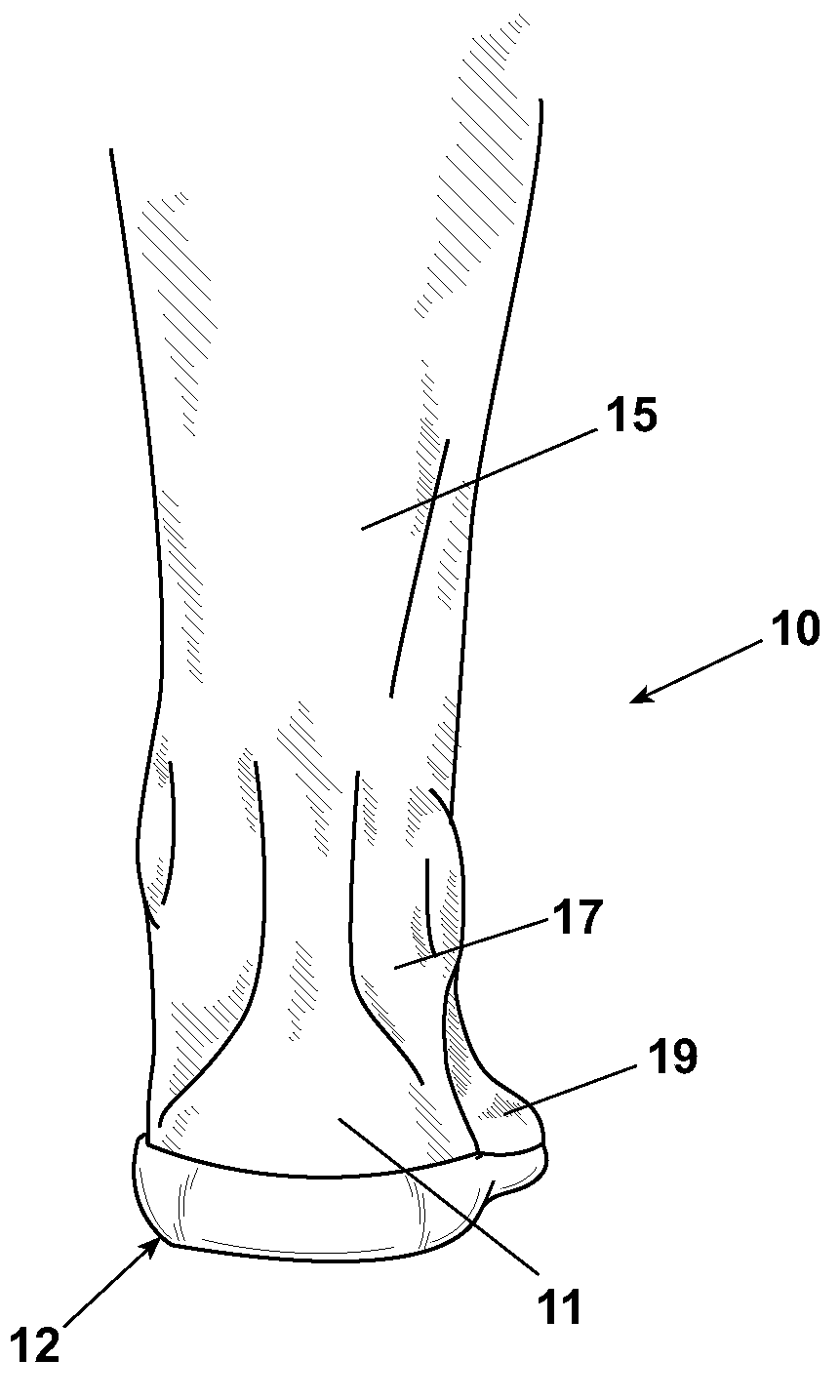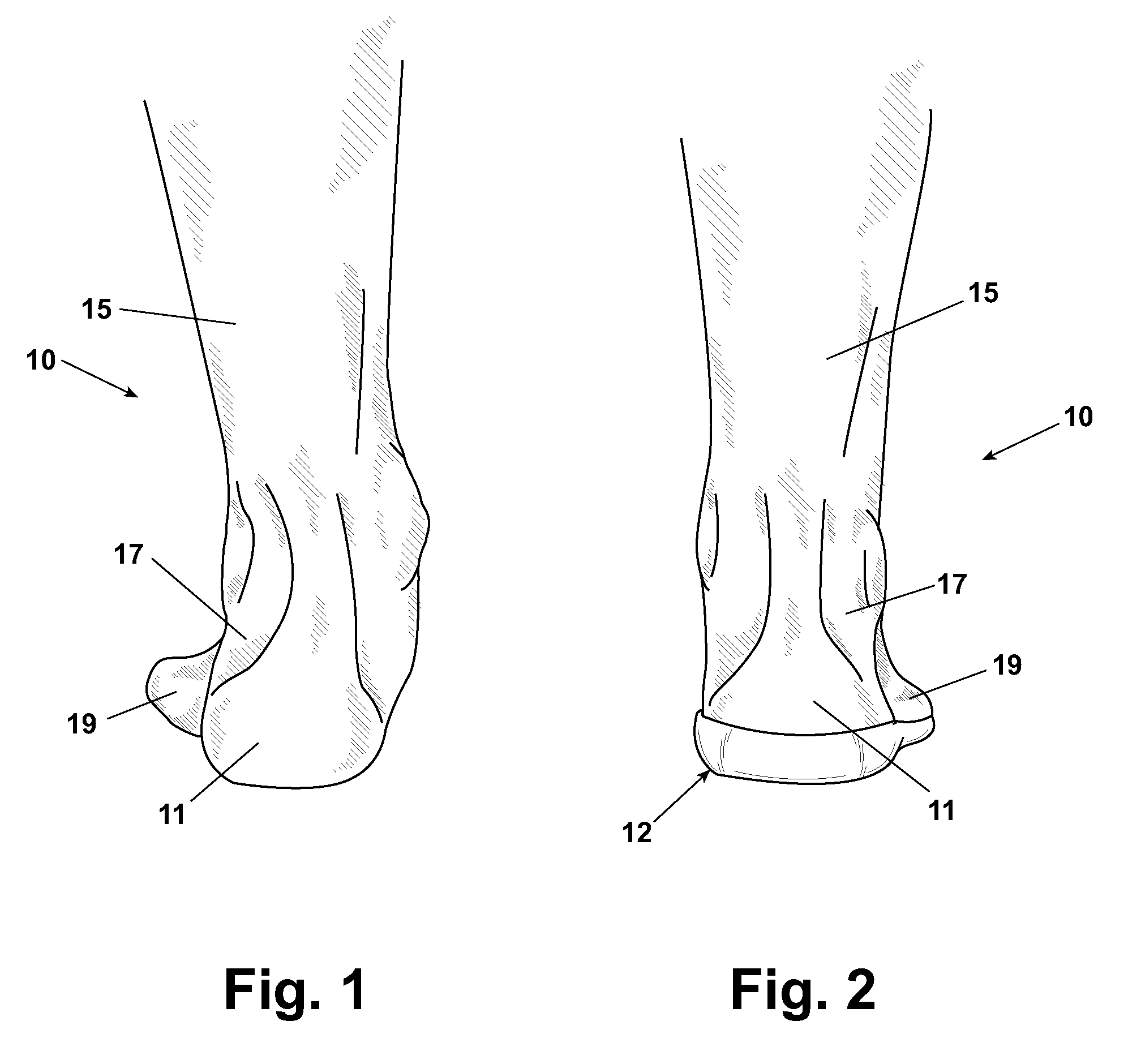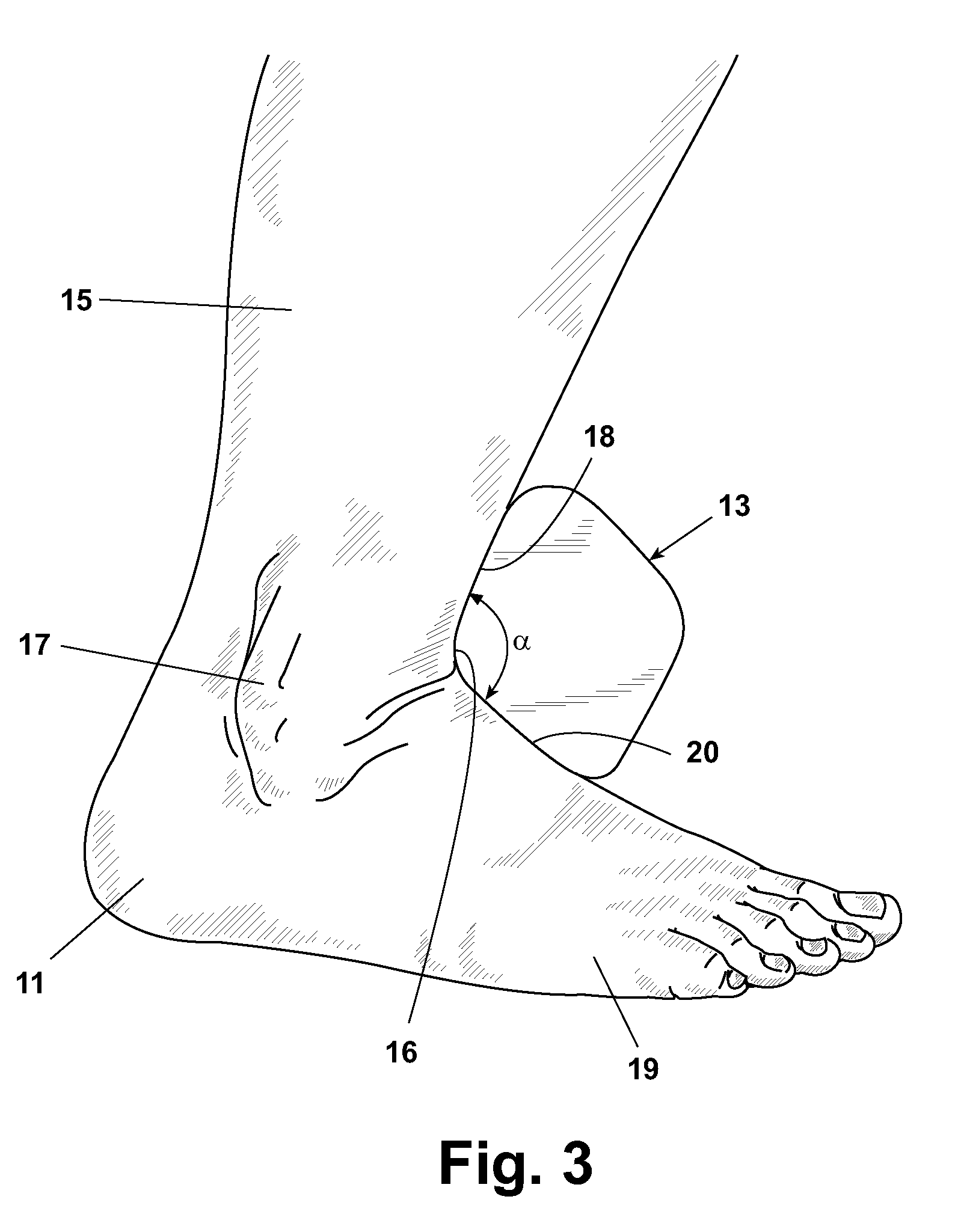Correcting foot alignment
a technology for correcting foot alignment and correcting foot, which is applied in the field of correcting foot alignment, can solve the problems of insufficient structural problems, insufficient corrective alignment insoles, and individual with flexible ankles may suffer from painful pressure points, and achieve the effect of increasing the maximum thickness
- Summary
- Abstract
- Description
- Claims
- Application Information
AI Technical Summary
Benefits of technology
Problems solved by technology
Method used
Image
Examples
Embodiment Construction
[0060]The foot has three main parts: the forefoot, the midfoot, and the hindfoot. The forefoot comprises the five toes, or phalanges, and their connecting long bones, i.e. the metatarsals. The midfoot comprises five irregularly-shaped tarsal bones, forms the foot's arch, and serves as a “shock absorber” during walking, running, or jumping. The bones of the midfoot are connected to the forefoot and the hindfoot by muscles and the plantar fascia, or the arch ligament. The hindfoot is composed of three joints and links the midfoot to the ankle, called the talus. The top of the talus is connected to the two long bones comprising the lower leg, i.e. the tibia and the fibula, forming a hinge that allows the foot to move up and down. The heel bone, or calcaneus is the largest bone in the foot. It joins the talus to form the subtalar joint, which enables the foot to rotate at the ankle.
[0061]FIG. 1 shows a portion of a lower extremity 10 of a human illustrating misalignment of a heel 11, a ...
PUM
 Login to View More
Login to View More Abstract
Description
Claims
Application Information
 Login to View More
Login to View More - R&D
- Intellectual Property
- Life Sciences
- Materials
- Tech Scout
- Unparalleled Data Quality
- Higher Quality Content
- 60% Fewer Hallucinations
Browse by: Latest US Patents, China's latest patents, Technical Efficacy Thesaurus, Application Domain, Technology Topic, Popular Technical Reports.
© 2025 PatSnap. All rights reserved.Legal|Privacy policy|Modern Slavery Act Transparency Statement|Sitemap|About US| Contact US: help@patsnap.com



